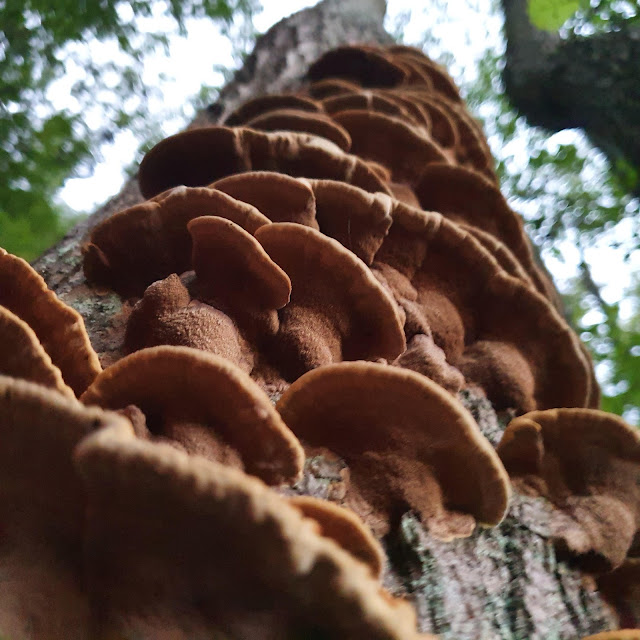Very glad to finally find some fungal fruiting bodies on the long-dead Elm along the trail.
First there was some lovely Wrinkled Peach, my first ever as far as I know, and gorgeously coloured, even if not obviously wrinkled. Closely associated with Elm - it is so satisfactory when things turn up exactly where they are supposed to be!
Secondly, the rather less attractive Tripe Fungus, Auricularia mesenterica, also closely associated with dead Elm. These fruiting bodies seemed rather old and dried out.
Here is the underside of one section, coming back to life a little.
Also note the beetle holes in the log.

















